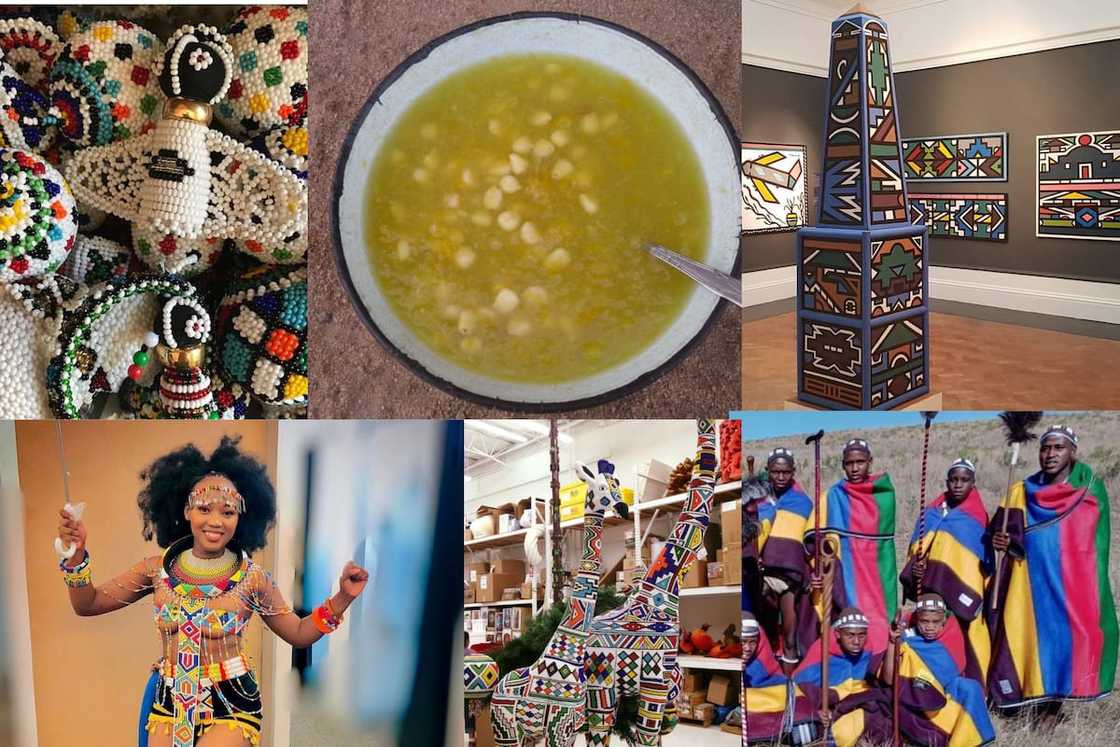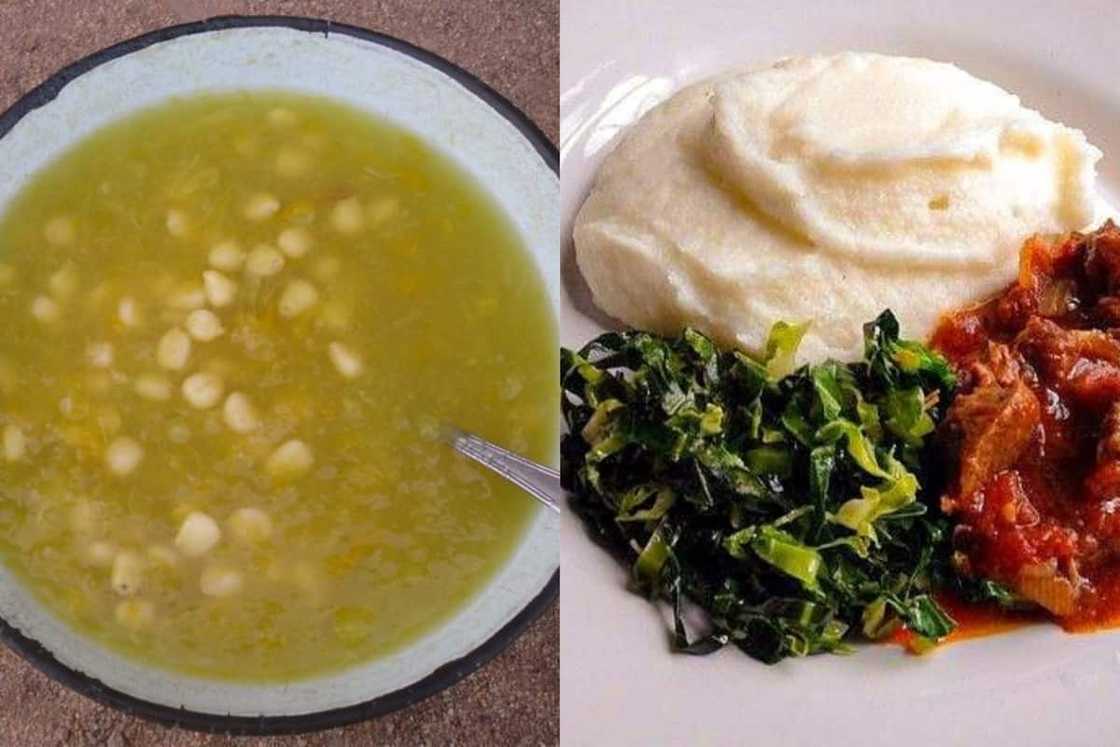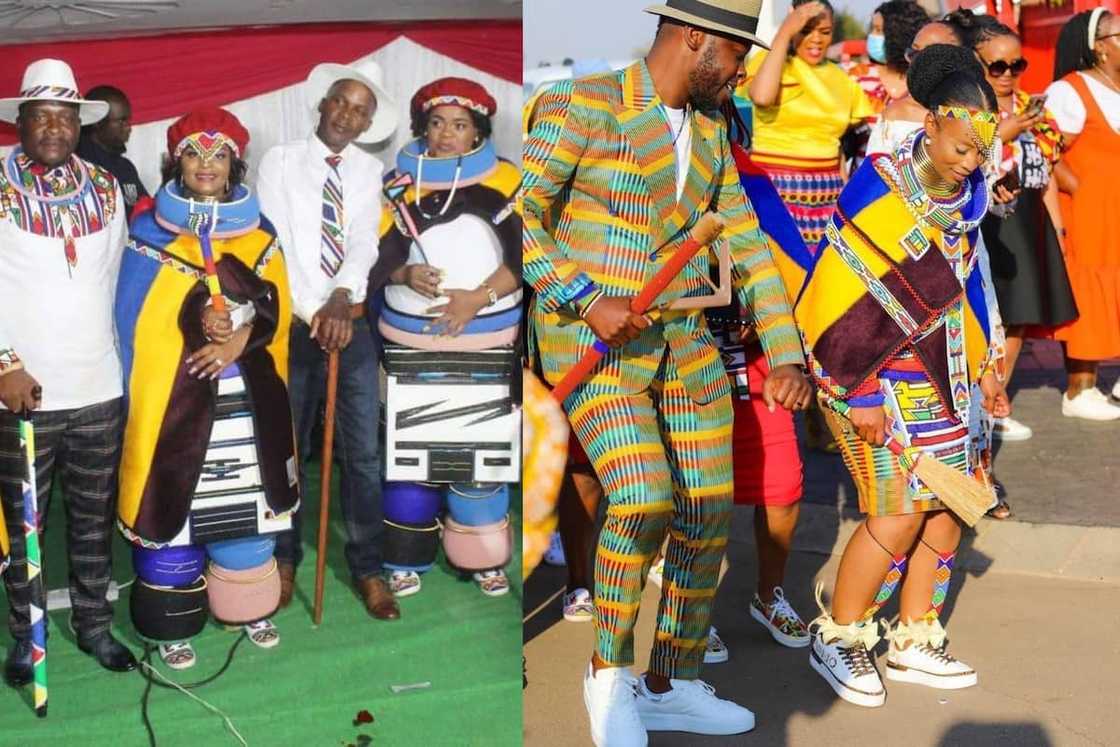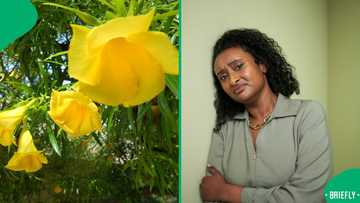Ndebele culture, food, patterns, traditional attire, customs, houses, arts and facts
The Ndebele people are known for their colourful patterns, clothes, and houses. Their language is one of the 11 official languages of South Africa. The Ndebele culture is closely related to the Zulu and Xhosa people. Discover some of the amazing Ndebele culture food and clothing.

Source: UGC
What is the Ndebele culture? It is the customs and traditions of this community that define it. These people generally reside in parts of Botswana, South Africa, and Zimbabwe.
Ndebele culture food and clothing
What are the Ndebele known for? They are known for their patriarchal system and polygamy. Ndebele culture and customs also involve the use of traditional medicine.
The community traces its origins to the broader Bantu community. Mafana was the community's first known chief. He was succeeded by Mhlanga, who had a son named Musi. In the 1600s, Musi moved to the hills of Gauteng, where the community settled.
After Musi died, his two sons fought for the chief's seat. The community split into two groups after the fight. The Manala group remained in the north, while the Ndzundza moved to the east and south. Today, the community makes up about 2% of the total population.
Ndebele language
What language does Ndebele speak? The Ndebele culture language is known as isiNdebele. The language has two dialects: the Nrebele (Northern) and the southern Transvaal Ndebele. It is one of the 11 official languages in the country.
The two dialects have a few differences in their language and culture. Those from the north are mainly from the BagaSeleka and BagaLanga tribes. They adopted their traditions and customs from the neighbouring Sotho community.
Traditional Ndebele food

Source: UGC
What do Ndebele culture eat? Corn is the staple food in this community. Maize cereals, which are known as isitshwala, are a favourite. They also grow and consume a variety of food crops, fruits and vegetables. The community also rears cattle for milk that is used to prepare foods such as isathiyane, which is porridge with fresh milk.
Ndebele culture clothing
What clothes do Ndebele wear? The Ndebele traditional attire is colourful. The ladies wear different ornaments to symbolise their status. Married women typically have more spectacular clothes.

Read also
Exclusive: Johannes Mandla Mnguni opens up about playing lead role in 1st Ndebele drama 'Komkhulu'
In ancient times, the Ndebele traditional attire dresses were complemented with copper and brass rings, idzila, that were worn around the neck, arms and legs. A woman removed them only after the death of her spouse.
Ndebele clothing for women also included neck hoops and isigolwani, made from grass. The hoops were mainly worn during the Ndebele traditional festivals. The ijogolo, an important Ndebele attire, was a five-fingered apron that married women wore after giving birth to their first child.
Every married woman wore a head covering that symbolised respect for her husband. Boys typically ran around naked, but girls wore beaded skirts from a young age. During ceremonies, men wore ornaments that their wives made.
Ndebele houses
The houses in this community are colourful. When the Boers first invaded their territory at the beginning of the 20th century and forced them to lead oppressive lifestyles, the people started communicating via expressive symbols.
They painted their houses to express their cultural resistance. The Boers thought houses were painted for decoration, so they did not prohibit it.
Traditionally, only natural pigments were used. They included monochrome colours such as black, limestone, whitewash and brown. Later, acrylic pigments were used.

Read also
Anele Tembe's tragic passing: 2 years later, questions remain unanswered and hearts remain heavy
The style of house painting is typically passed down across generations. A house that is well painted symbolises that there is a good wife and mother who lives therein. The women paint the houses, both inside and outside.
Ndebele patterns

Source: UGC
The people in this community have particular patterns and geometric shapes employed in their art and paintings. The Ndebele patterns' meanings may vary slightly from one family to another. Typically, the patterns are outlined with black paint and then filled with a different colour.
Wedding Ndebele culture
In this culture, marriages only happened between members of different clans. A man was allowed to marry a lady from the same family his paternal grandmother came from. In the Ndebele traditional wedding customs, the bride was secluded for a fortnight at her parent's home to protect her from men's eyes.
After seclusion, she would emerge covered in a blanket and umbrella. During the wedding, she would receive a blanket and beadwork. The married woman would then move to her husband's home. She would retain her clan, but all her children would take their father's clan name.
Ndebele traditional dance
What is the Ndebele dance called? The popular dances in this community include Ingquza, Mushongoyo, Amabhiza, and Isitshikitsha. Men performed Muchongoyo before or after a war.
They held sticks and shields as they danced. It involved stamping and making dramatic gestures. Isitshikitsha, on the other hand, was performed to please the King or in rainmaking ceremonies. It involved clapping, singing, whistling, and ululation.
Belief system
The community members believed that spells and curses caused sickness. The strength and reliability of traditional healers depended on their ability to fight curses and spells.
Treatment was typically done using medicines or throwing bones. It was believed that the traditional healers were mediums who could speak with the ancestral spirits. Today, most people from this community are practising Christians.
The Ndebele culture is distinguished by its colourful patterns, clothing, and paintings. The community resides in parts of Botswana, South Africa, and Zimbabwe. Although people are now becoming modernised, and there is increased rural-urban migration, some elements of this Ndebele culture food and clothing are unlikely to fade away.
READ ALSO: Top 20 interesting facts about South Africa you ought to know | Details for travellers
Briefly.co.za recently published an article on interesting facts about South Africa. The country is one of the world's richest countries in terms of cultural and natural diversity. It is well-known for various reasons, including its diverse culture, rich history, and natural landscapes.
Over the years, the southernmost African country has become a popular tourist destination for visitors worldwide. This article highlights the fascinating facts about South Africa you should know.
Source: Briefly News

Peris Walubengo (Lifestyle writer) Peris Walubengo has vast experience in search engine optimization through digital content generation, research, editing, and proofreading. She joined Briefly.co.za in November 2019 and completed the AFP course on Digital Investigation Techniques. You can email her at perisrodah254@gmail.com.

Adrianna Simwa (Lifestyle writer) Adrianna Simwa is a content writer at Briefly.co.za, where she has worked since mid-2022. She has written for many periodicals on a variety of subjects, including news, celebrities, and lifestyle, for more than three years. She has worked for The Hoth, The Standard Group and Triple P Media. Adrianna graduated from Nairobi University with a Bachelor of Fine Arts (BFA) in 2020. In 2023, Adrianna finished the AFP course on Digital Investigation Techniques. You can reach her through her email: adriannasimwa@gmail.com



